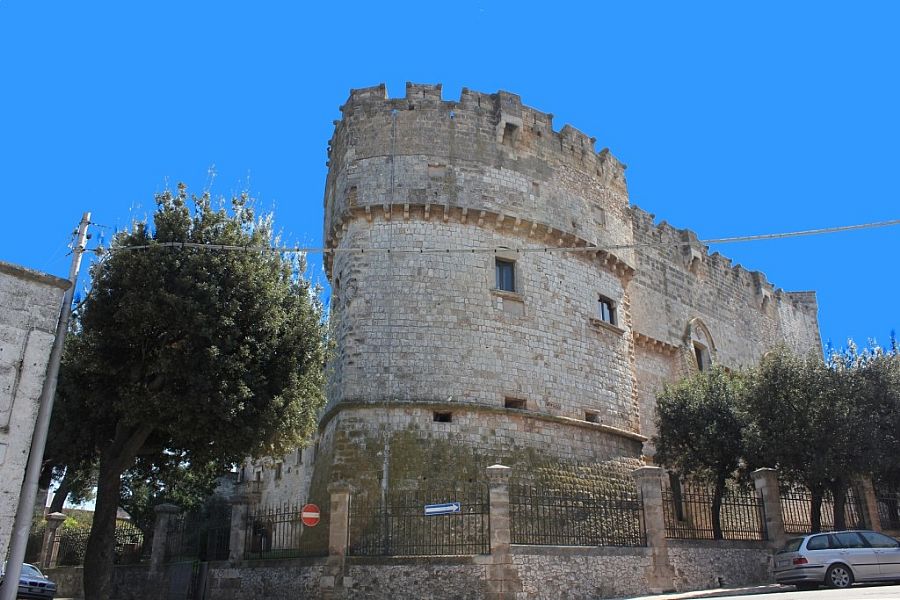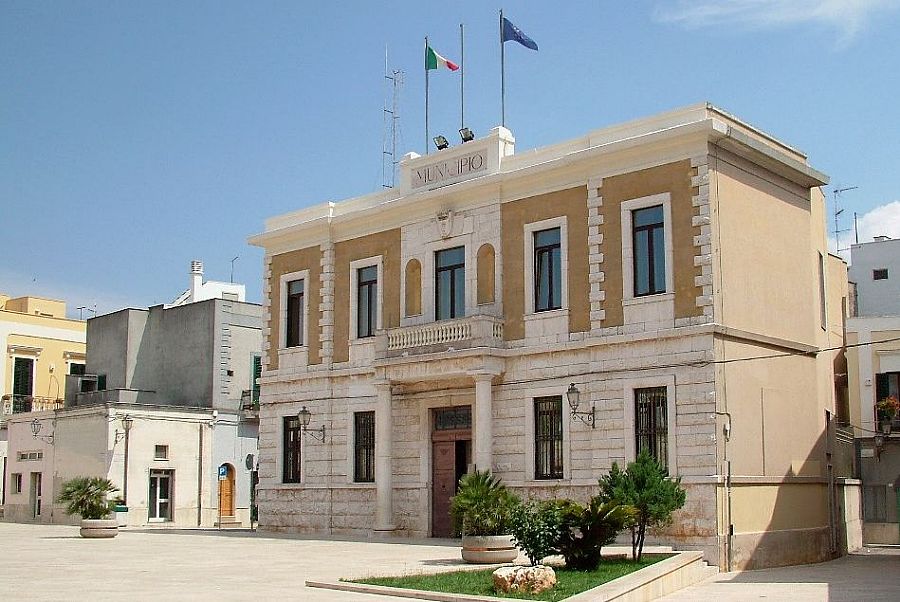Carovigno

Located in the upper Salento of Puglia where it meets the popular Valle d'Itria, Carovigno is a white-washed city that fans out from its caramel-colored castle. With 17,000 residents, it's a pleasant small town but large enough to offer sights and services and a sense of local life. There are loads of good restaurants, and so many bakeries and pastry shops that your will power will be seriously challenged!
Located just five kilometers from the Adriatic Sea, the town has been tied to the coast since ancient times when it was a Roman port. The coat of arms depicts a dolphin with a cupid playing a harp, a colorful and whimsical nod to the mthological founding of the town by Arione, son of Poseidon who was saved by dolphins.
The history goes back even further to the Messapic people who were here prior to the Romans, but who left behind traces of their megalithic walls (which unfortunately didn't protect them from destruction by the Tarantini). It was caught in the crosshairs of the Punic Wars, and it seems the city was a revolving door of invaders and rulers - Byzantines, Goths, Normans, Swabians, Angevins, Aragons, and Venetians all come and conquered or ruled over the area through the centuries.
Carovigno's charm comes mainly from the Middle Ages when the sinewy narrow lanes, palazzi and castle were built. The Castello Orsini-Balzi defended the town against the Turks when it was a fedual estate. The walls were extended and the massive fortress on the highest point to oversee the territory. It passed through several feudal families before becoming the seat of the Dentice de Frasso, the last lords, and the name that has remained on the castle since. It's an impressive structure with three towers, imposing walls and a chapel dedicated to St. Anna. The access is through the wholly charming Porta Ostuni archway.
The city boasts 14 towers in all, and the old city gates are attractive reminders of the past, especially interesting is Porta del Prete with its archways that make a covered walk. Around town, look for the pretty Torretta del Civile, Gothic-like arched Porta Brindisi which is actually two gates merged together, Porta Ostuni near the castle and the pretty churches that display country style artwork and decorations.
One of the great traditions of Carovigno that they still hold proudly is that of the "Nzegna", a 1,000-year old custom of flag-throwers (called sbandieratori, in Italian), a highly skilled display of pageantry. You can see them for yourself if you come for the Maria Santissima di Belvedere, the most important and devout feast day of the year, held in the days following Easter. The Nzegna honors the Holy Madonna with their skills, tossing the flags to trumpets and drums. There are many religious festivals here, though, one nearly every month, with a procession and devotion (and some food!)
At the sea, the star-shaped Torre Santa Sabina and coastal nature preserve have always been part of Carovigno's history and defense, today a natural-type environment for enjoying the beauty of the sea without being marred by over-development. Between town and the coast, the extensive olive groves are part of a park, as well, the "agrarian park of the olives", and Carovigno is one of only a handful of towns around Italy that have been awarded the prestigious Spiga d'Oro, a designation give to environmentally sound rural communities for the overall quality and cleanliness of their civil and agrarian practices.
Have a look at our vacation villas in Puglia.

 Amalfi Coast
Amalfi Coast Sorrento Coast
Sorrento Coast Tuscany
Tuscany Cilento National Park
Cilento National Park Lake Como
Lake Como Rome and Latium
Rome and Latium Umbria
Umbria Capri and Ischia
Capri and Ischia Venice
Venice Puglia (Apulia)
Puglia (Apulia) Liguria
Liguria Sicily
Sicily Lake Maggiore
Lake Maggiore Lombardy
Lombardy Sardinia
Sardinia Lake Garda
Lake Garda Abruzzo and Marche
Abruzzo and Marche Calabria
Calabria


Been there? Done that? Share your experience and tips!
Haven't visited yet? Have questions about Carovigno? Ask them here!